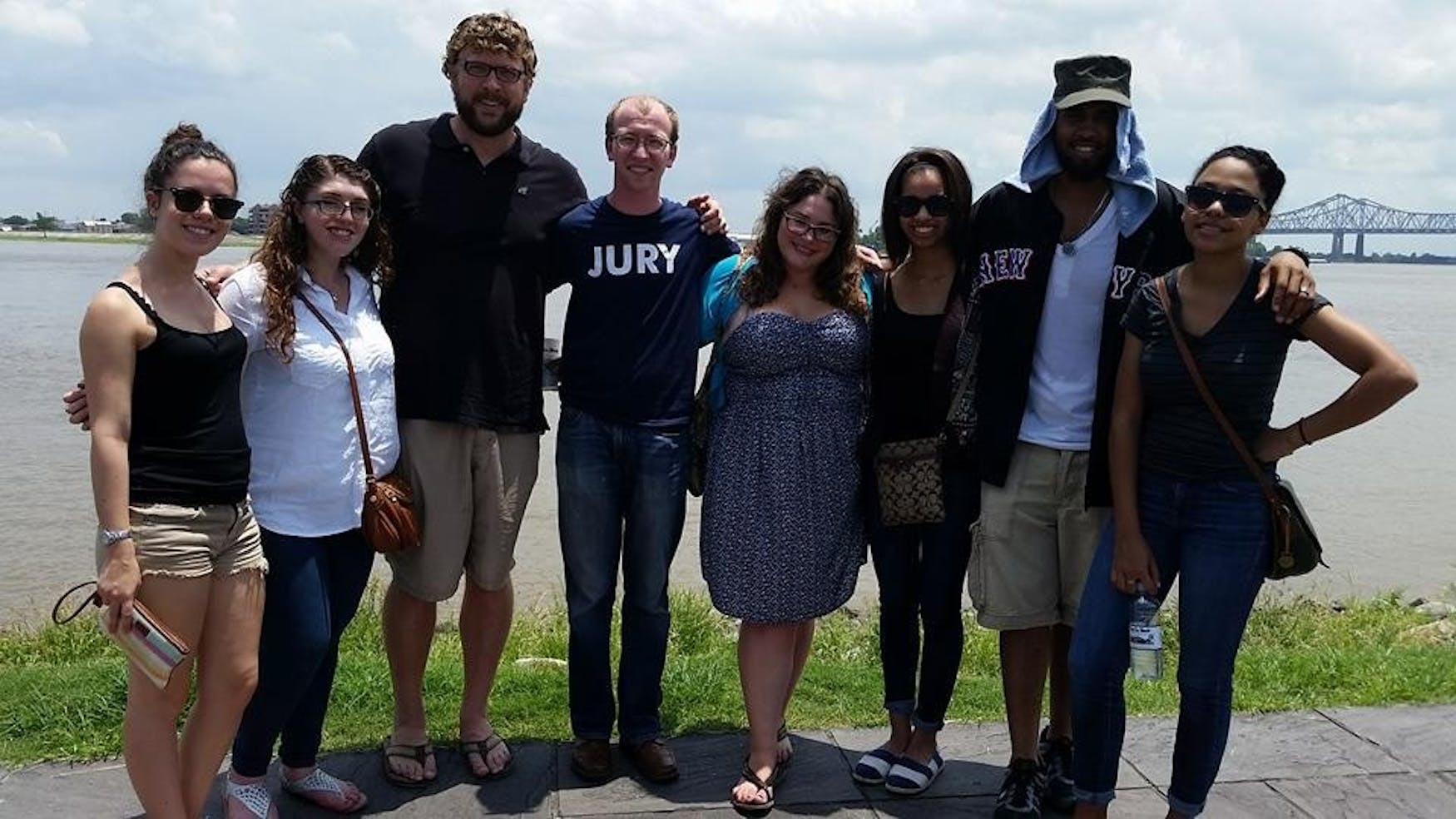Segregation’s shadow
In 1954, 60 years ago, the Supreme Court ruled in Brown v. Board of Education to desegregate public schools. In 1964, 50 years ago, the Civil Rights Act outlawed discrimination.
“Anniversaries are an important time to reflect,” said Prof. David Cunningham (SOC). This summer he led a Justice Brandeis Semester course, called “Civil Rights and Education Equality,” this allowed him and his students to do just that.
Cunningham, Molly Schneider ’11, nine current Brandeis students and four Jackson State University students spent half of the summer in Boston and half in Jackson, Miss. to allow for comparison and collaboration with Jackson State University. The group studied and did hands-on, primary research on the desegregation and the re-segregation of schools in both areas.
In summer 2011 Cunningham taught a similar JBS course, “Civil Rights and Racial Justice in Mississippi,” focusing on desegregation and its consequences. This summer, the course narrowed its focus to education.
“For people who were invested in white supremacy, invested in racial segregation, there was nothing more dangerous than this idea of having children be put into interracial settings” Cunningham said.
Among their archival discoveries in Boston were a collection of essays written 40 years ago by students about their experience with busing, an attempt to desegregate schools by busing neighbors of varying affluence to the same school. “That was really cool because they were these actual accounts of what it had been like,” Noah Coolidge ’16, a student in the course, said.
In collaboration with the JBS, the Schuster Institute for Investigative Journalism and WGBH found the now middle-aged students who wrote these essays and asked them to read and reflect on the words they’d written in their youth. This project, as well as other data and interviews collected by the JBS students, can be found through the Schuster Institute’s website.
The Schuster Institute sent two employees along when the cohort traveled to Jackson. “That allowed us to think really differently about our project. We were doing interviews with two cameras set up to get a tight shot and a wide shot, we would have a boom [microphone] and the lights. It was a real, high quality, professional experience,” said Cunningham.
In Mississippi, the students found archival data such as lists of inventory for black and white schools. “You can see inequalities in that way in a much more real way. It’s not just ‘oh we devoted more dollars to them,’ it translates …you see the very specific inequalities,” Cunningham said.
The students also conducted interviews with Mississippi residents whose experiences varied vastly during the Civil Rights Movement. “[The students] heard people talk about lying on their stomachs and waiting for the [Ku Klux Klan] to pass by,” said Molly Schneider ’11, the program assistant.“Others talked about going to…what they call ‘segregation academies’ and how they felt about that.” Segregation academies were private schools established for white parents to avoid sending their children to desegregated public schools.
Students got a chance to interview one of these segregation academy alums on the site of the abandoned academy he once attended. “Now it’s just a bunch of concrete slabs and a decaying gymnasium,” said Coolidge. This experience was especially meaningful for him. “The institution of segregation, this symbol of it, is decaying.”
Through their research, the JBS found that this metaphor might be unrealistic. “If you look at the composition of the schools’ districts over time and the subsequent decades the Boston school system and the Jackson school system have many more similarities than differences” Cunningham said, “including the fact that they’re even more segregated today than they would have been in the early 1970s.”
Allie Goodman ’16, a student in the JBS, agrees. “People talk about segregation in the past tense, but they shouldn’t. It’s very much now. Even if it’s not by law it still exists.”
In the face of these harrowing realizations, students were able to be inspired through interactions with Civil Rights leaders.
Hollis Watkins, a county organizer during the 1964 Freedom Summer, spent time with students, during which he broke into a song about freedom.
“It was the most amazing moment. When you listen to the lyrics of the song coming from a Civil Rights leader it becomes a lot more real,” Goodman said.
Students were also able to spend half a day with Roy DeBerry ’70, Mississippi native, activist and notable Brandeis alum. DeBerry was president of the Brandeis Afro-American Society when the organization’s members, including DeBerry, took over Ford Hall in 1969. The students took over Ford Hall, where the Shapiro Campus Center is now, for 11 days, giving 10 demands to the administration. Their demands all centered around increasing minority representation on campus.
“One of their demands [during the Ford Hall takeover] was around maintaining funding for the Brandeis Transitional Year Program—the TYP program. It’s a main reason why TYP still exists in such a vibrant way on campus. And four of our students [in the JBS] went through the [Myra Kraft]Transitional Year Program” Cunningham said. He is excited his students got a chance to connect personally to historical trajectories such as this one.
Cunningham hopes to run another JBS class in the summer of 2017, building on the findings the group made this summer.
“I’m really grateful for the tremendous amount of work the students were able to do and all that we were able to accomplish, but in a lot of ways this was just the tip of iceberg.



Please note All comments are eligible for publication in The Justice.